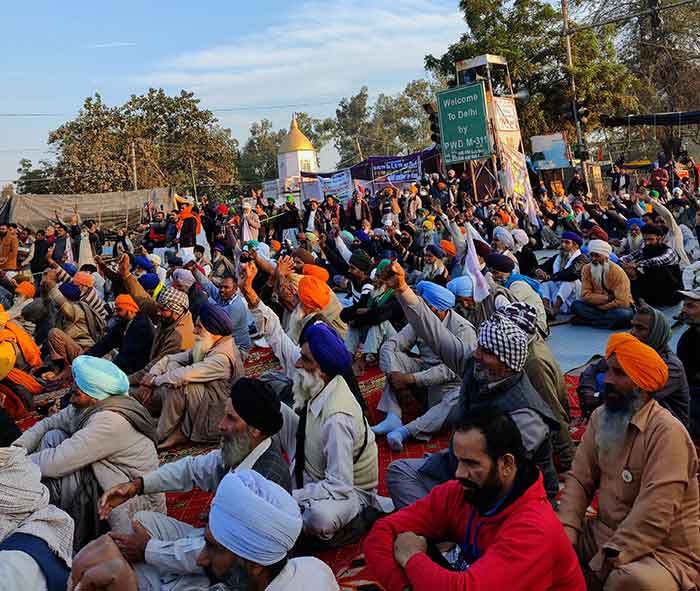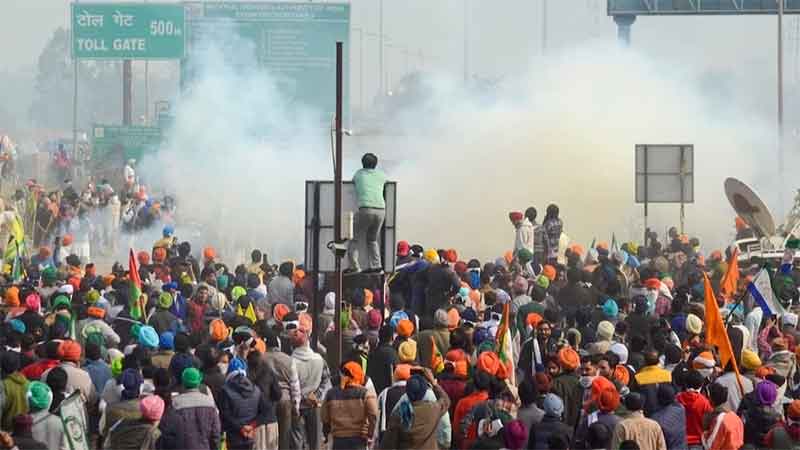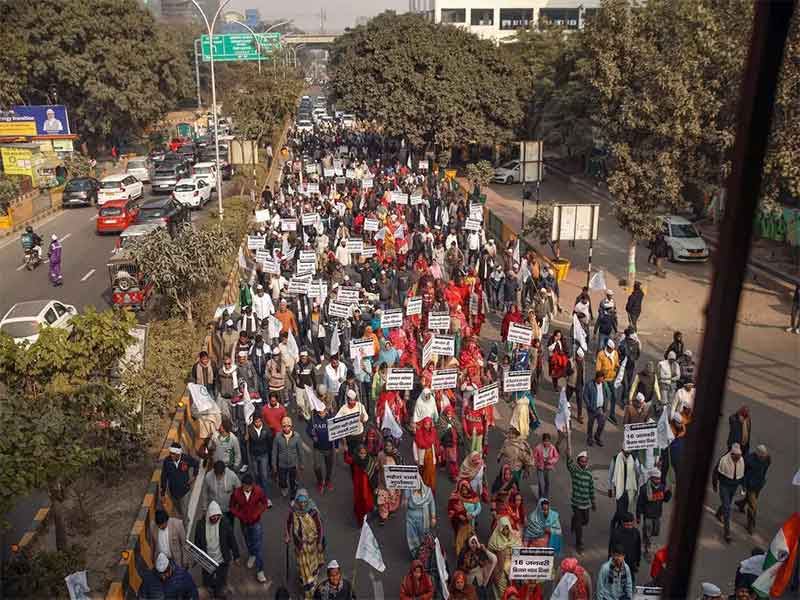
As Punjab was selected for early introduction of green revolution and the accompanying investments and subsidies, and the state also receives more remittances from family members who work abroad or have settled there, there has been an exaggerated perception of farm-related prosperity in Punjab, while the reality for many of the small and marginal farmers has been that of fast increasing costs and debts as well as growing non-sustainability of technology which is highly extractive and harms environment.
A few years after the advent of the green revolution it started becoming clear that Punjab’s farmers were in the grip of a severe agro-ecological crisis. Before the advent of the green revolution, Punjab grew a wide diversity of crops and crop-varieties using time respected crop rotations and mixed farming systems. These were able to exist in compatibility with local soil, water and climate conditions so that even after hundreds of years of cultivation there was no heavy stress on soil and water. However, the green revolution technology started creating stress for soil and water within just one or two decades. Loss of biodiversity and narrow genetic base of crops brought by the green revolution technology led to greater vulnerability to heavy damage from diseases and pests, in turn requiring heavy use of hazardous chemical pesticides and other agro- chemicals.
High dependence on heavy and unbalanced use of chemical fertilizers depletes the fertility of land. Chemical fertilizers cannot enhance the soil’s organic matter which is the key to fertility. Heavy reliance on chemical fertilizers ultimately leads to a situation where more and more of these have to be used just to maintain the existing yields at rising costs. This is precisely what appears to have happen in Punjab at a relatively early stage. For example, during the five years from 1977-78 to 1981-82 use of chemical fertilizers in Punjab increased from 465 thousand tonnes NPK to 812 while the yield for the major crops increased only moderately or stagnated.
What is more, chemical fertilizers are much less suitable for tropical climate and soil compared to temperate areas. Here their contribution to pollution as well as long term damage to soil fertility is much more. The contribution of earthworms in maintaining soil fertility is also much higher in our country and the agri chemicals have been very harmful to them. Chemical sprays also destroy some other friendly insects. The deeper root growth important for preventing any deficiency of micronutrients has also been hampered due to the formation of pan by chemical fertilizers.
So it is not surprising that farmers in Punjab soon experienced rising costs and stagnant yields. The farmers’ costs also increased further due to over investment in mechanization. As per information provided by Punjab State Farmers Commission, the state has double the number of tractors it requires. At the same time farmers’ returns were further eroded by exploitative practices in marketing of farm produce. All this led all too soon to increasing economic distress of farmers resulting in high levels of indebtedness. This situation was not altered to any significant extent by farm subsidies which had very low reach-out to small farmers. For example, only 6 per cent of the power subsidy in 2012-13 reached small farmers who comprise 34 per cent of the total farmers in Punjab.
The increasing distress of farmers has unfortunately also led to thousands of suicides. A census survey on suicides conducted in the most affected six districts namely Bathinda, Sangrur, Mansa, Barnala, Moga and Ludhiana revealed that 3507 farmers committed suicide in these districts during the period 2000-11. Out of these suicides 74 per cent were committed due to economic distress and indebtedness. 80 per cent of these suicides were by small farmers cultivating less than five acres of land. The average debt in such cases was Rs. 234541.
According to another census survey of two worst affected districts Sangrur and Bathinda between 2000 and 2008, 1757 farmers committed suicides out of which 1288 were committed primarily due to indebtedness, while 469 were committed due to other reasons. “The average size of holding in such cases was three acres and the average debt was Rs 1.15 lakh. A significant fall in cotton productivity during the period of 1997 to 2003, heavy investments on digging/ deepening of bore wells due to a steep fall in the groundwater table and unproductive expenditure on social ceremonies were primarily responsible for causing economic distress in these farming families in these districts. Social and cultural backwardness in this belt coupled with economic distress resulted in the occurrence of a large number of suicides in the farming sector”.
An earlier study by Bharat Kisan Union (BKU- Ekta) provided a figure of 29776 suicides by farmers in seven districts on the basis of extrapolation of sample study results. This study covered suicides during 2001-05. In this study 750 suicides were documented from 70 villages. On the basis of extrapolation of the study on two districts mentioned above, Sidhu and Jaijee have argued that the incidence of farmers’ suicides per lakh population is much higher in Punjab (154) compared to the more discussed states of Maharashtra (62), Andhra Pradesh (33) and Karnataka (59). However, extrapolation of data from highest suffering districts may be questionable.
Studies and reports on these suicides have mentioned many heart-rending stories of extreme distress. In some cases two or more members of a single family have committed suicide. In other cases one suicide led to conditions in which another suicide followed. In other situations failed suicide attempts led to hospitalization the cost of which greatly increases the indebtedness which was the original cause of the suicide.
Clearly a significant number of farmers in Punjab have experienced distress and tensions despite the over-hype about of the prosperity of green revolution areas. Hence there is need to ensure that the problems faced by farmers of Punjab are sorted out with care and caution , and no policy change is made which can aggravate these problems. It is in this wider context that the voice of protesting farmers must be heard carefully, and any laws that are considered harmful by them should not be imposed on them (or on farmers of other parts of the country).
Bharat Dogra is a journalist and author. His recent books on freedom movement of India are When the Two Streams Met and Azadi Ke Deewon ki Dastaan ( Hindi).
SIGN UP FOR COUNTERCURRENTS DAILY NEWSLETTER















































